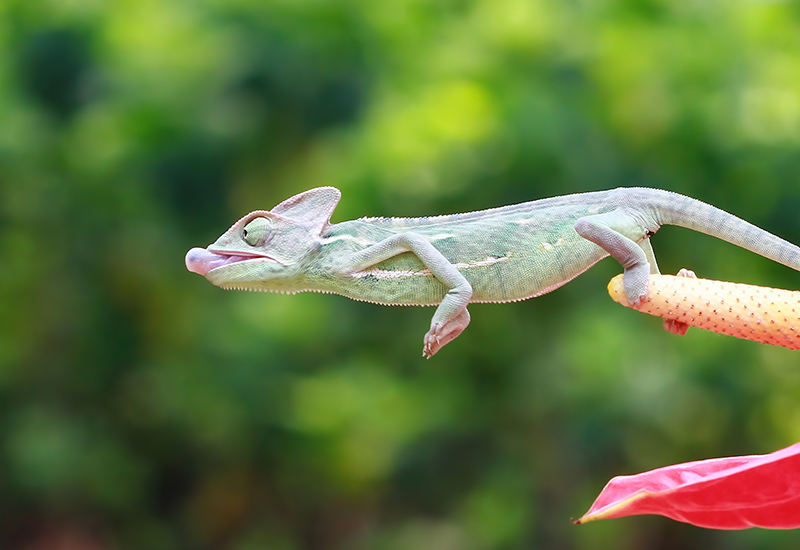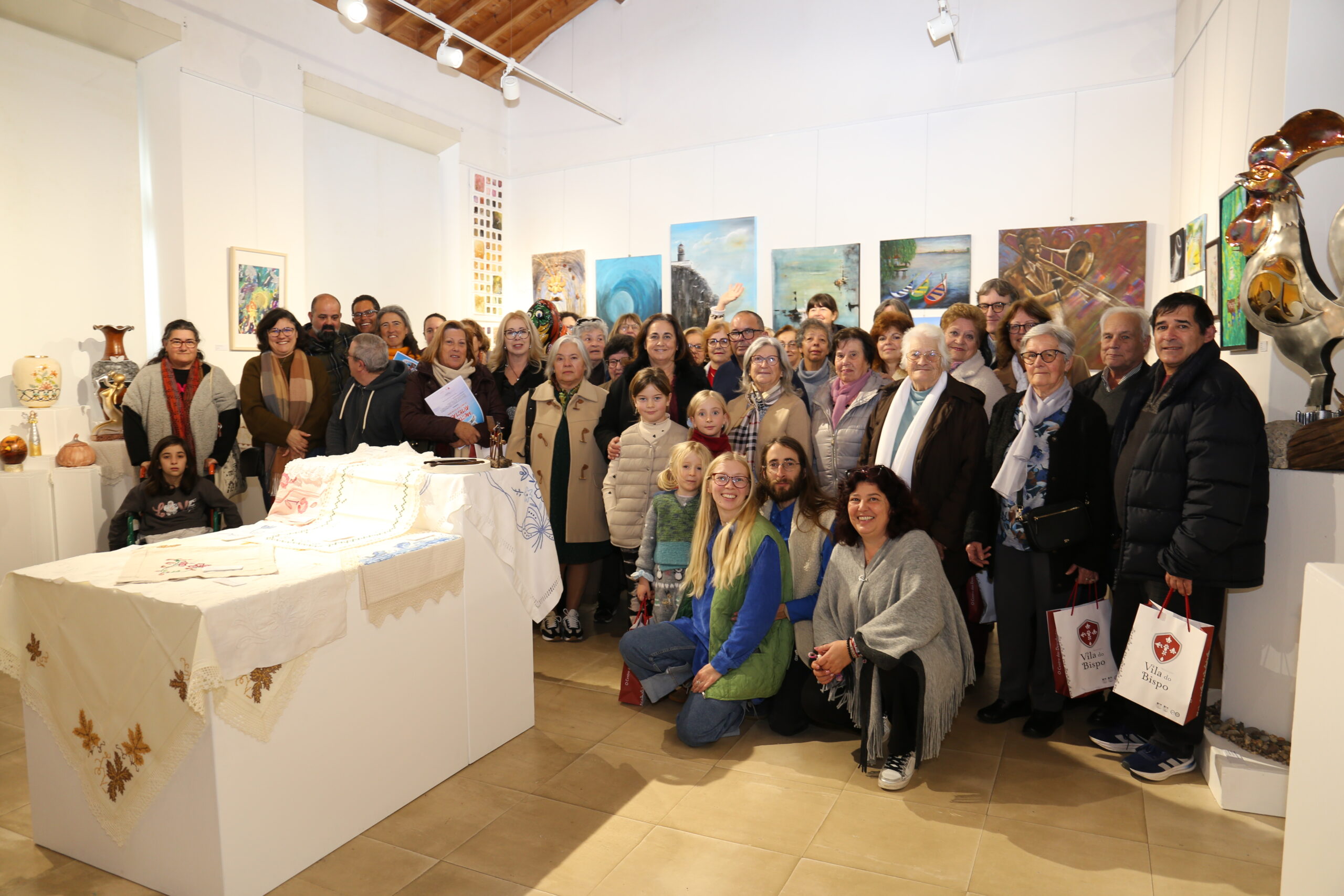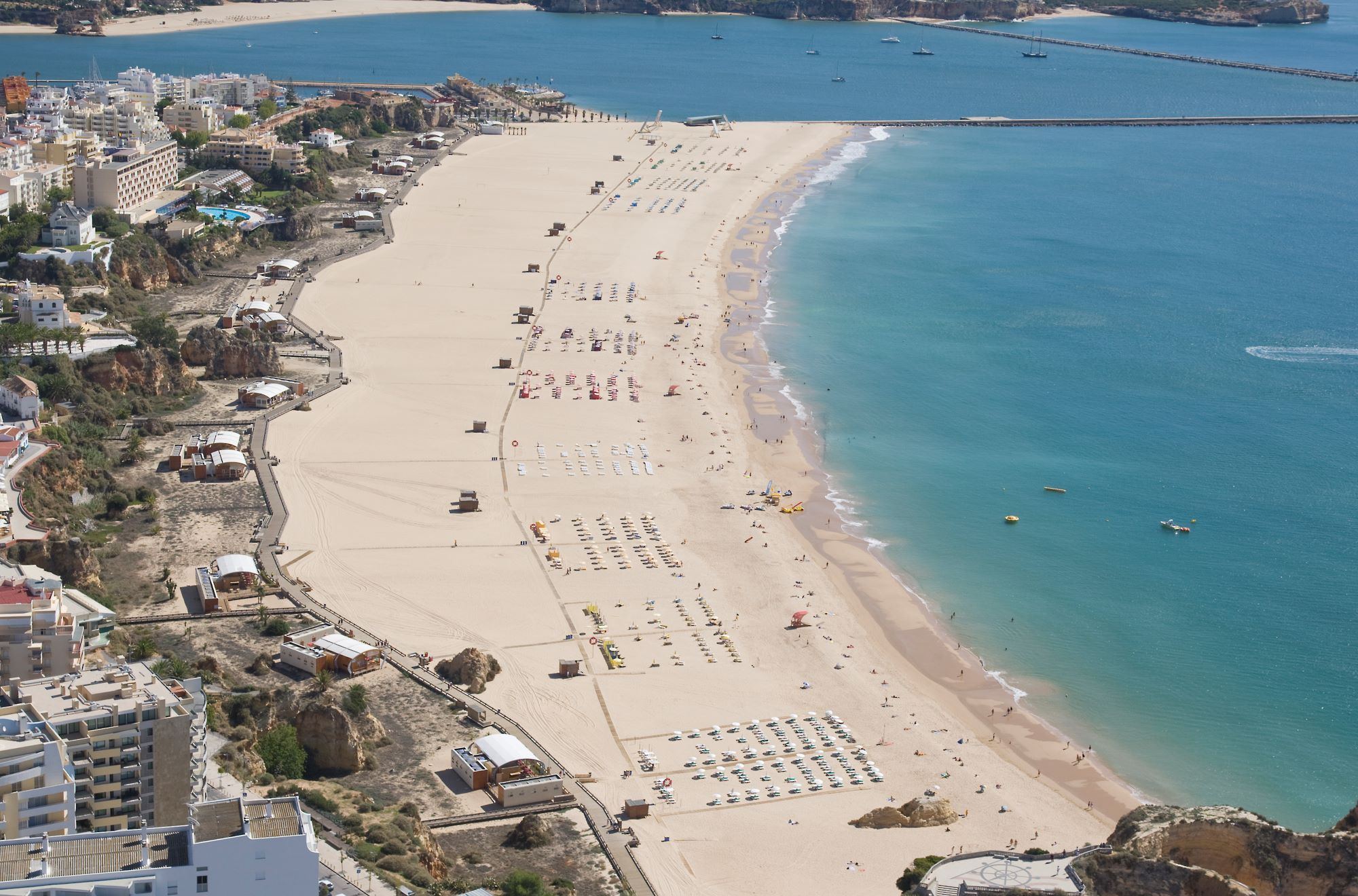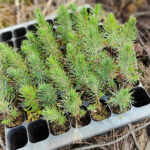One of the most enigmatic animals living in the Algarve is, unarguably, the chameleon. Used on logos and advertising across the region, it is a symbol of the Algarve, which is the only place in Portugal where you can spot these magical creatures. However, people can live in the Algarve for many years and never get to see one. Chameleons are very inconspicuous reptiles that have evolved for thousands of years specifically to avoid being seen and can disappear in the blink of an eye.
The only species found in Portugal is the Mediterranean chameleon, also known as the common chameleon (Chamaeleo chamaeleon). This lizard is found throughout the north of Africa and the Mediterranean basin. The origin of the Portuguese population is unclear, but many believe that the specimens were brought to the Algarve by fishermen who frequently stopped in Morocco. Initially kept as pets, they found their way to gardens, surrounding sand dunes and woodlands. These are ideal habitats for chameleons to settle and eventually led to the colonisation of most of our southern coast.
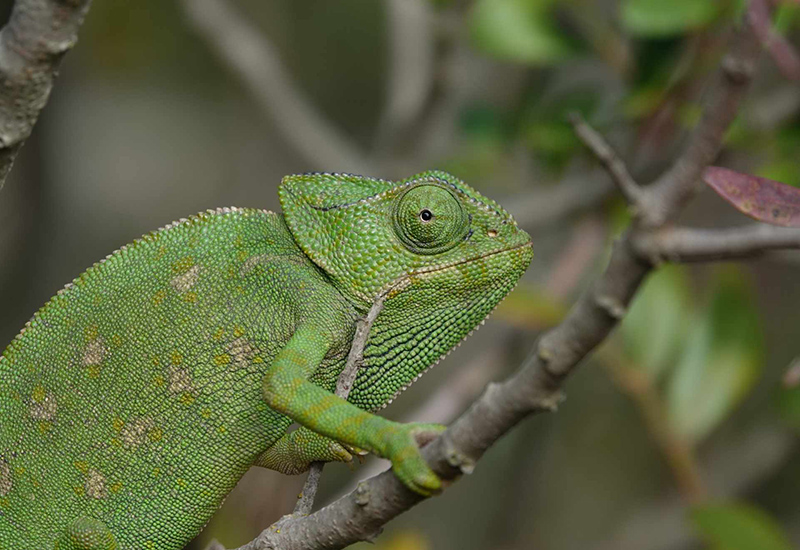
Common chameleons grow to 40cm in length and have a lifespan of approximately three years. Usually solitary, they only tolerate members of the opposite sex during mating season. They are arboreal, which means that they prefer to spend their time in trees and bushes. A prehensile tail aids life on trees and is used as an extra limb, or to maintain balance and stability. Slow-moving creatures, their motion is sometimes a swaying walk that resembles vegetation in the wind, which is part of their strategy to avoid detection by predators. During mating season, males can be hastier and more euphoric when fighting rivals or chasing females.
Famous for their ability to change colour and match their environment, these animals are born with a natural colouration that ranges from bright green to a dull sandy grey, which already blends in very well against the leaves and branches where they spend most of their lives. Camouflage is a successful natural defence mechanism used against predators, but self-protection is not the only trigger for a chameleon’s change in pigmentation. The skin tone is also a form of body language and an indicator of the health and mood of each individual. Paler colours usually mean relaxed and calm individuals, brighter colours match more active or excited animals, and darker displays are generally adopted by stressed or ill chameleons.
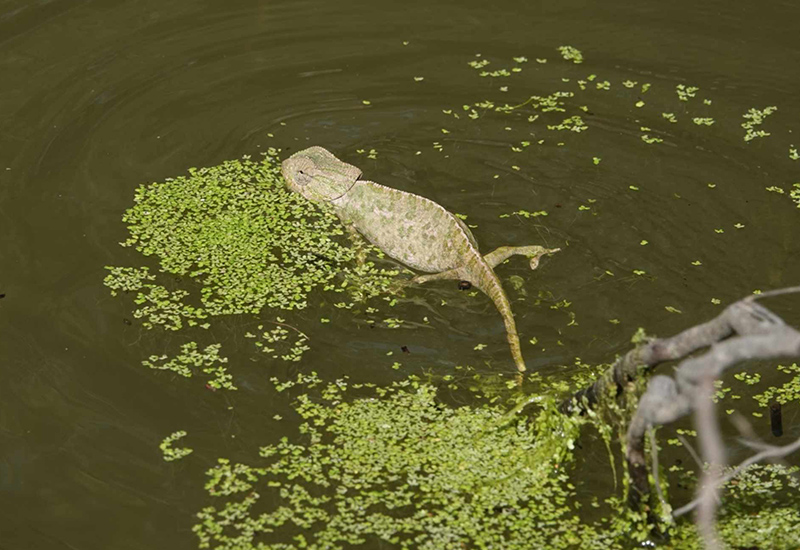
Daytime hunters, they ambush their favourite prey, which are flies, moths, locusts and praying mantis. When hunting, chameleons use another unique adaptation: their tongue. Twice the size of their body length and with a sticky end, this weapon is fired with incredible accuracy to snatch oblivious insects.
As for threats, chameleons are prey for raptor birds, snakes, foxes, storks and other opportunistic animals. Domestic cats and dogs, roads and illegal catching also pose serious problems to their population.
Worldwide, there are more than 200 species of chameleons which can be identified by their triangular-shaped heads, independent-moving eyes or spiral-curled tails. However, not all chameleons show all these traits. Off the eastern coast of Africa, the island and country of Madagascar is home to a great number of chameleon species that have evolved there and can be found nowhere else on the planet. Among these is the Brookesia nana or simply “B.nana”, aka the nano chameleon. Only found in 2021, B.nana is amongst the tiniest vertebrates in the world, with adult specimens measuring an impressively small 22 millimetres! Also native to Madagascar, the Parson’s chameleon (Calumma parsonii) can grow to 70cm in length, roughly the size of a small domestic cat! Kenya and Tanzania are home to a species that resembles a miniature triceratops, the Jackson’s chameleon (Trioceros jacksonii).
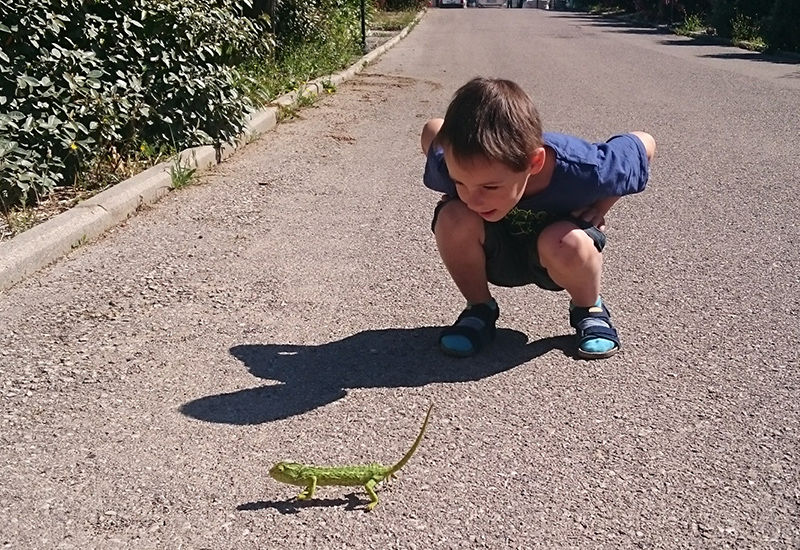
Despite what we know of the Mediterranean chameleon, many questions still need to be answered about its distribution and population numbers. As a species, the Mediterranean chameleon is currently classed as ‘least vulnerable’ on the IUCN red list of threatened species. Despite local concerns that the population in the Algarve is endangered, there is also the possibility that we just don’t see them!
A census project was launched in 2021 by the non-profit organisation Vita Nativa. This project relies on the local community to report chameleon sightings across the region. With nearly two thousand independent reports so far, this project has identified a more defined distribution range, from Vila do Bispo to Castro Marim and inland as far as Monchique, Silves and Loulé. Most records are sent with location and photos or videos, which has allowed Vita Nativa to gather extra information on age, sex and, more importantly, preferred habitats and vegetation according to the different times of the year.
Be part of this scientific project! If you see a chameleon, send the report to Vita Nativa:
www.vitanativa.org/en/chameleon-sighting
Joke: My son Jaime’s favourite: What do you call a funny lizard? A stand-up chameleon!


